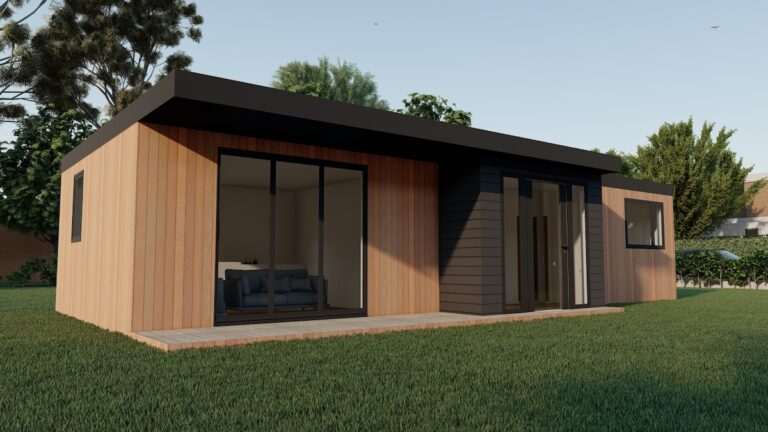Unlocking the Door to Your Dream Home: A Comprehensive Guide to Homes for Rent to Own


For many individuals and families, the dream of homeownership can feel like an elusive goal, hindered by financial constraints or credit challenges. In such situations, homes for rent to own emerge as a viable and empowering solution. This alternative path to homeownership offers individuals the opportunity to lease a property with the option to buy at a later date. In this comprehensive guide, we’ll explore the concept of homes for rent to own, delving into the benefits, considerations, and steps involved in turning the key to your dream home.
Contents
Understanding Rent to Own
How Rent to Own Works:
Rent to own, also known as lease-option or lease-to-own, is a housing arrangement that combines elements of both renting and buying. In a typical rent-to-own agreement, a tenant signs a lease to rent the property for a specified period, usually ranging from one to three years. During this time, the tenant has the option to purchase the home at a predetermined price. A portion of the rent paid may be credited towards the future purchase of the property, serving as a form of down payment.
The Rent-to-Own Agreement:
The rent-to-own agreement outlines the terms and conditions of the arrangement, including the monthly rent amount, the length of the lease-option period, and the purchase price of the home. It also specifies the option fee, a non-refundable upfront payment made by the tenant to secure the right to purchase the property. This agreement provides a clear framework for both parties and is crucial in ensuring a smooth transition from renting to ownership.
Benefits of Rent to Own
Path to Homeownership:
The primary advantage of homes for rent to own is the opportunity it provides for aspiring homeowners to gradually transition from renting to owning. This option is particularly valuable for those facing financial barriers or credit challenges that may hinder their ability to secure a traditional mortgage.
Time to Build Equity:
During the lease-option period, tenants have the chance to build equity in the property. Unlike traditional renting, where monthly payments contribute solely to the landlord’s income, a portion of the rent paid in a rent-to-own arrangement may go towards the future purchase of the home, helping tenants accumulate equity over time.
Test-Drive the Home:
Rent to own allows prospective buyers to test-drive the property before committing to its purchase. This period provides an opportunity to assess the neighborhood, evaluate the condition of the home, and ensure that it aligns with the buyer’s long-term goals and preferences.
Considerations and Challenges
Upfront Costs:
While rent to own can be a more accessible path to homeownership, it does require some upfront costs. In addition to the standard security deposit, tenants must be prepared to pay the option fee, which is typically non-refundable, and may not be credited towards the purchase price if they decide not to buy the property.
Market Conditions:
Market conditions can impact the success of a rent-to-own arrangement. If property values rise significantly during the lease-option period, the agreed-upon purchase price may become a bargain for the tenant. On the flip side, a decline in property values could leave the tenant paying more than the home’s current market value.
Legal and Financial Considerations:
Entering into a rent-to-own agreement involves legal and financial considerations. It’s advisable for both parties to consult with legal and financial professionals to ensure the terms of the agreement are fair, legally sound, and understood by all parties involved.
Steps to Secure a Rent-to-Own Home
Research and Identify Properties:
Begin by researching properties available for rent to own in your desired location. Real estate websites, local classifieds, and real estate agents specializing in rent-to-own properties can be valuable resources.
Evaluate Your Finances:
Assess your current financial situation to determine if a rent-to-own arrangement aligns with your budget and long-term goals. This includes reviewing your credit score, calculating your debt-to-income ratio, and establishing a clear understanding of your financial capabilities.
Inspect the Property:
Before committing to a rent-to-own agreement, thoroughly inspect the property. This includes evaluating the home’s condition, checking for necessary repairs, and ensuring that it meets your expectations and requirements.
Negotiate Terms:
Work closely with the landlord to negotiate the terms of the rent-to-own agreement. This includes determining the monthly rent, lease duration, option fee, and purchase price. Clear communication and transparency are key during this negotiation phase.
Consult Legal and Financial Professionals:
Before signing any agreements, it’s crucial to consult with legal and financial professionals. An attorney can review the terms of the contract to ensure it’s legally sound and fair, while a financial advisor can provide guidance on the financial implications of the arrangement.
Secure Financing Options:
While a rent-to-own agreement allows time to build equity, it’s essential to explore financing options well in advance of the purchase option date. Work on improving your credit score and research mortgage options to ensure a seamless transition to homeownership.
Conclusion
In conclusion, homes for rent to own provide a unique and accessible pathway to homeownership for individuals facing financial constraints or credit challenges. This innovative arrangement combines the benefits of renting with the potential for homeownership, allowing tenants to build equity, test-drive the property, and gradually transition towards owning their dream home. While rent to own comes with considerations and challenges, careful research, negotiation, and consultation with professionals can help navigate this exciting journey toward achieving the goal of homeownership. Whether you’re a first-time buyer or someone seeking an alternative route to owning a home, the rent-to-own option opens the door to a brighter future.
Also Read: Digital Balances for Home and Commercial Uses: A Guide to Precision and Practicality





